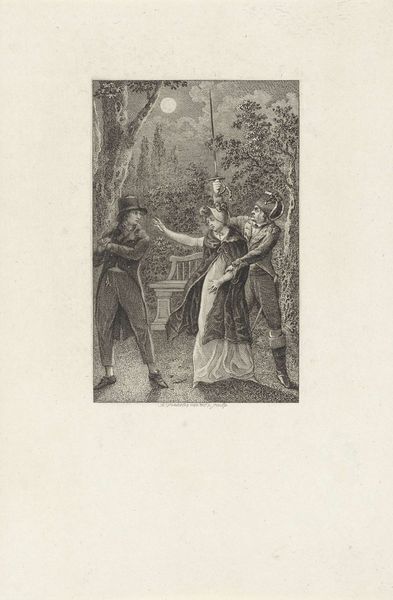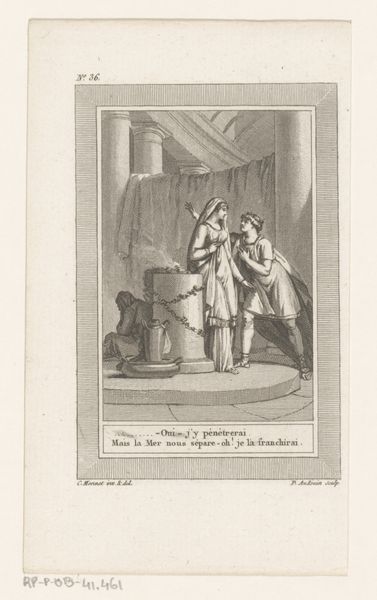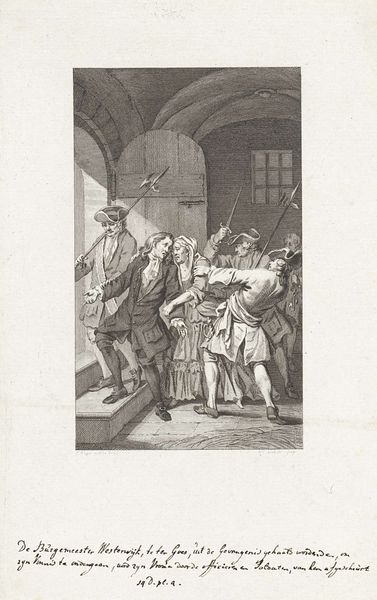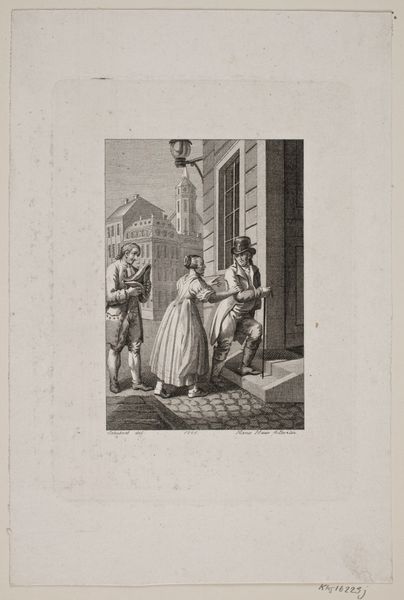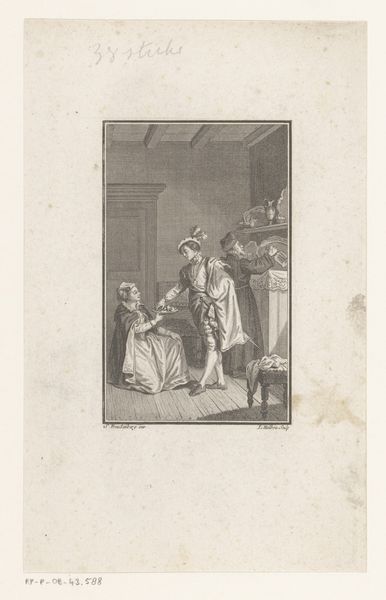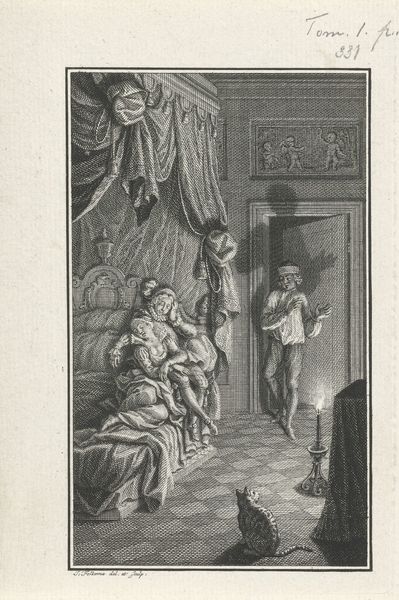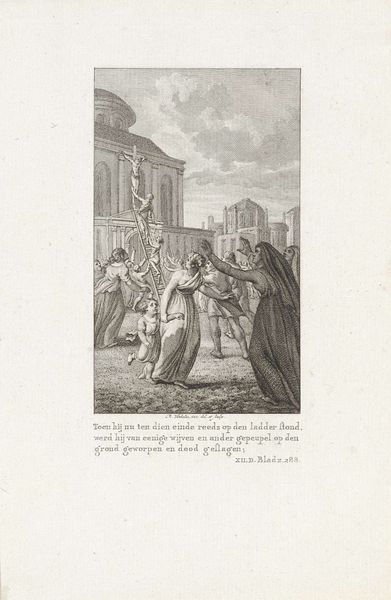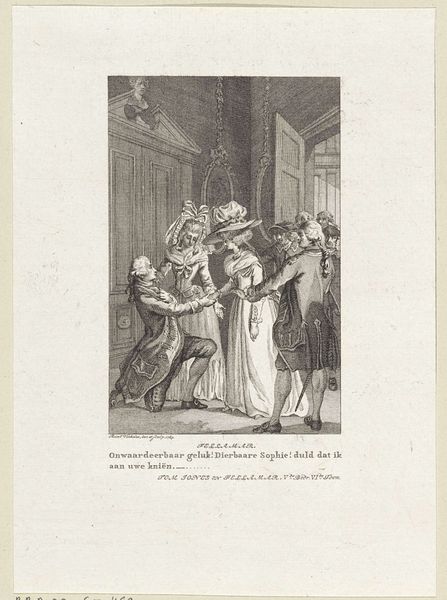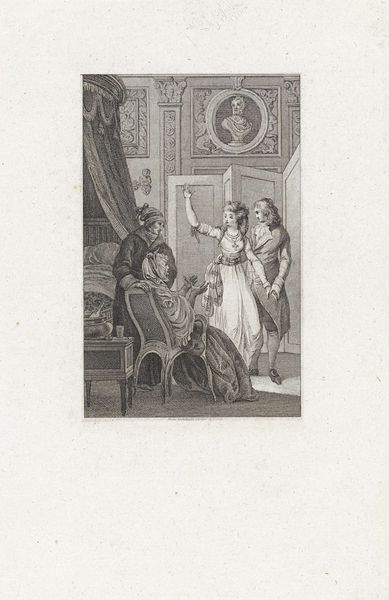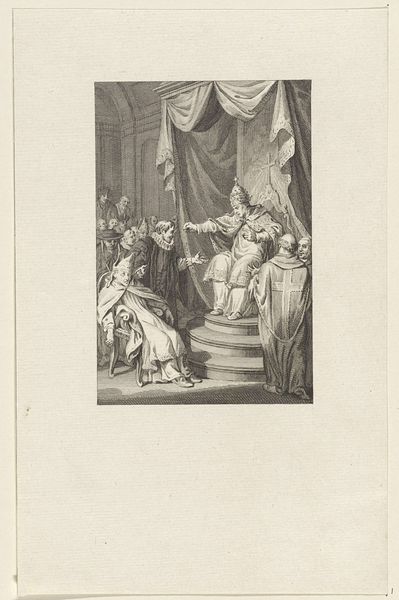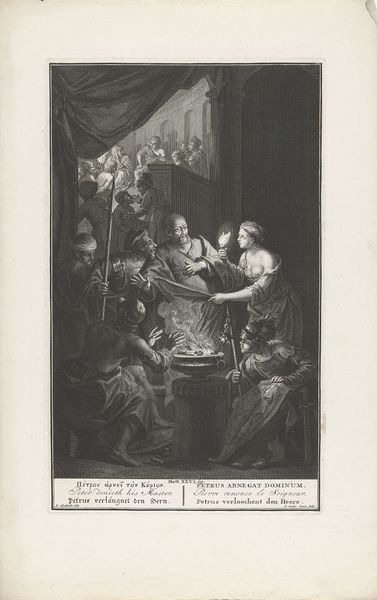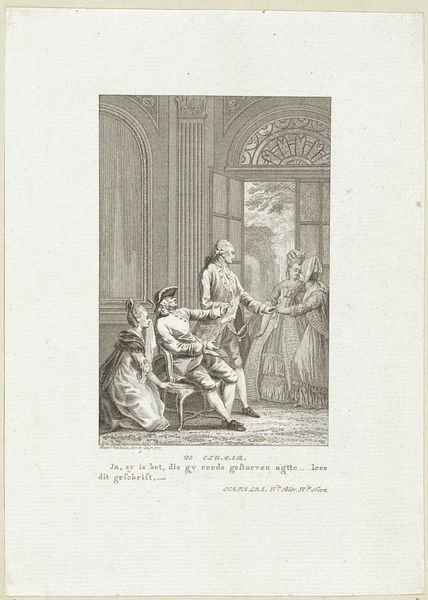
Dimensions: height 215 mm, width 125 mm
Copyright: Rijks Museum: Open Domain
Curator: This engraving, “Twee vrienden,” or “Two Friends,” by Reinier Vinkeles, made in 1772, offers an intriguing glimpse into 18th-century social dynamics through a fable, currently residing in the Rijksmuseum. Editor: It immediately strikes me as theatrical, almost staged. The stark contrast created by the torchlight throws the figures into high relief, heightening the dramatic tension. The architecture too contributes to a rather tense atmosphere. Curator: The materiality is quite important here. As an engraving, Vinkeles worked with a metal plate, meticulously incising lines to create this image. Think of the labor involved. This process, transforming base materials through skill and craft, underscores how engravings served to disseminate visual narratives to a wider public beyond painted works available only to the wealthy. Editor: Absolutely. And that accessibility is key to its social impact. Given the title's suggestion of "friends", yet the light is being cast onto the two characters meeting by characters hiding and watching above suggests to me the way friendships were constructed and surveilled in that era. There’s an element of potential betrayal. I also see gendered elements in that power structure being established. Curator: Precisely. Also look at the details achieved with line work in rendering fabric textures. It draws the eye in, allowing viewers to see how such craftsmanship served both an aesthetic and communicative function in its historical context. We can't ignore how class status becomes marked through clothing rendered in detail here too. Editor: The way the setting also contributes to those same interpretations; a grand staircase with prying eyes in this narrative scene. Where do they fit into these networks? I’d love to understand more about how works such as this participated in contemporary dialogues about friendship and deception during times of societal change. Curator: Studying its means of production offers critical context. The labor-intensive nature of creating engravings reflects not just Vinkeles' artistry but also economic networks circulating around its creation and dissemination – shaping taste while employing labor to serve consumption. Editor: Engaging with art history via these theoretical lenses is key. Works become tools offering glimpses into power dynamics, gender constructs, racial exclusions of that past time – sparking insights applicable beyond that museum to our lives today. Curator: By closely examining these prints in our collections we can see they represent key transformations shaping early-modern ideas about craftsmanship and how artists themselves become situated socially within evolving consumer economies. Editor: Definitely! Let's allow these artworks to become vehicles to push thinking about what power structures might look like in our own lives, just like the two men looming at the top of that stairway do.
Comments
No comments
Be the first to comment and join the conversation on the ultimate creative platform.
